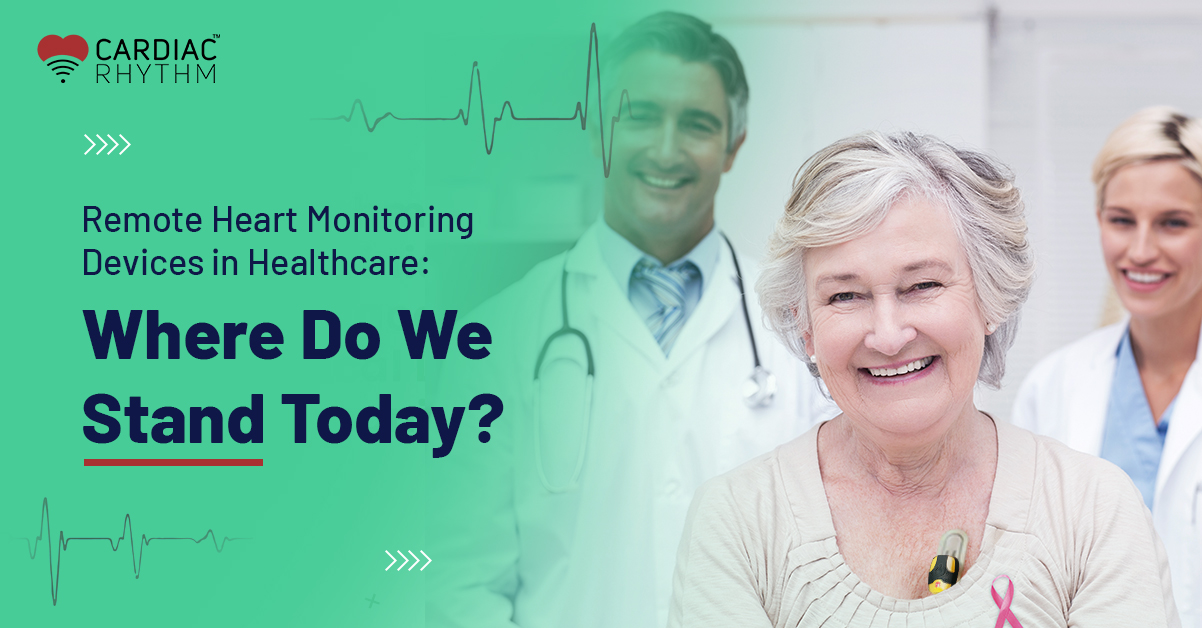

call us:1800 5999 5999
+91 72 0005 0005
Remote Heart Monitoring Devices in Healthcare: Where Do We Stand Today?
Posted on December 16, 2021
In today’s fast-paced world, the need of the hour is to adopt quick and fast solutions to cement all possible gaps in different industries. Given this increasing demand for the adoption of different advancements in technology, all these industries and sectors countries are looking for the right upgrades within their operations. This is necessary to facilitate a larger group of the population at one time and thus, with the fast-approaching digitization, opting for remote healthcare services is almost necessary.

The Gap In The Market
According to a healthcare report for 2021, approximately one-third of the senior citizen population in India have been diagnosed with hypertension, 2.7% have had a stroke and a 5.2% have been admitted with chronic heart disease. These increasing numbers of heart disease patients along with the lack of sufficient medical resources, like hospital beds, have been concluded to be a major area of concern for the country.
Given the increasing statistics, it has become necessary to incorporate digital mediums, remote heart monitoring services, and accurate equipment to provide medical support to heart patients, especially during the sudden occurrences of situations like the global pandemic.
Need For Patient Monitoring Devices in Healthcare
The global pandemic pushed the limits for all medical facilities available in the country, prioritizing the coronavirus over any other medical issue. The exhausted remainder in the end, of the minimum medical support available, is a prime reason indicating the urgent necessity of remote monitoring devices, especially for heart patients.
Two reasons why it has become an utmost priority is to first allow constant communication between the patients and the doctors and second, the remote availability which increases flexibility for both the hospitals and the patients. Cardiac Rhythm is one such remote device facility that offers wireless medical solutions for all heart-related issues and concerns.
Role Of Remote Cardiac Devices in Healthcare
The healthcare industry dominates every country, given the increased exposure of a whole new range of diseases every once in a while. However, with the occurrence of a new disease, the common heart diseases go out of attention, causing severe damage on the backend. For the same reasons, and many more mentioned below, remote devices are necessary in today’s world.
A remote cardiac monitoring service will allow hospitals and doctors to keep a constant check on all the patients, without the hassle of individually attending to them per visit.
The results or the daily reporting received with the help of a remote Holter monitoring device will ensure increased accuracy and thus more reliable and easy to make diagnoses for the doctors.
A variety of remote monitoring devices also come with an in-built biosensor that helps provide deeper clinical-grade data insights of all patients, increasing the efficiency rate greatly, as compared to general ECG machines. One such device is by Cardiac Rhythm that is fully wireless and has more than one function. It facilitates cardiac activity monitor, Holter monitoring, and Cardiac Telemetry Monitoring service.
The Future Potential of Wearable Devices
As per reports, one of the biggest healthcare trends in the current timeline is the increasing use of remote patient monitoring devices. This trend is only expected to grow further upwards on the graph, with a whole new range of different remote monitoring devices for all individual health concerns, especially cardiovascular diseases.
The remote devices till now have been backed by the internet of things as well as artificial intelligence, both being the leading technological advancements globally. But the future potential is highly underestimated so let us discuss the possibilities below.
As far as this is concerned, the use of the internet of things in the healthcare industry is increasing rapidly. Whether it be your smartwatches for your daily health and activity records or the biosensor-driven Cardiac Rhythm wearable device, all these techniques and result-oriented devices are all due to IoT.
Along with IoT, artificial intelligence also plays a major role in contributing to the increased availability of unique wearable devices today, especially for the healthcare industry. At present, there are multiple AI-driven wearable devices that focus on providing near real-time statistics and insights of data to the designated doctor or hospital, to ensure patients are taken care of 24/7.
Additionally, AI along with IoT together are now working towards reducing the effort required by the patients by effectively targeting increasing the range of medical facilities and support and reducing the size of the device as a whole.
Benefits For Patients Using Wearables
Given the increasing popularity of these wearable devices in the healthcare sector, it is evident that the pros attached to these smart devices are highly beneficial for both the patients as well as the hospitals/doctors. Let us discuss some of them below.
Bottom Lines
Overall, to conclude, the future is digital and it is only fair for the healthcare industry to make the best use of the available technologies of artificial intelligence and the internet of things. The main idea is to combine them together and produce effective and efficient remote heart monitoring devices that can remove the potential pain points between a patient and a doctor by streamlining the process in just a few quick steps. Wearable ECG Holter devices are accurate, have constant availability, offer clear and deep data insights, and overall improve your patient’s health.
Tags: Cardiac ECG Monitoring Service, Cardiac Event Recorder Service, Cardiac Monitoring Devices, Cardiac Telemetry Monitoring Service